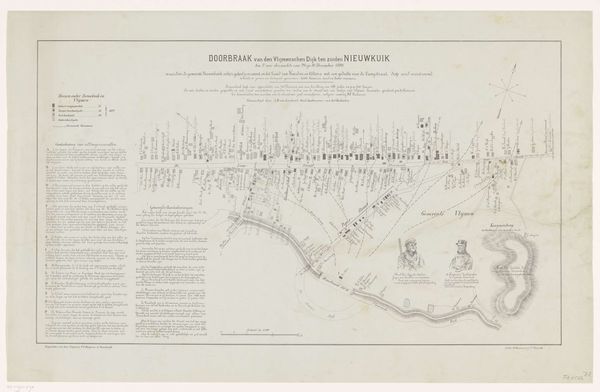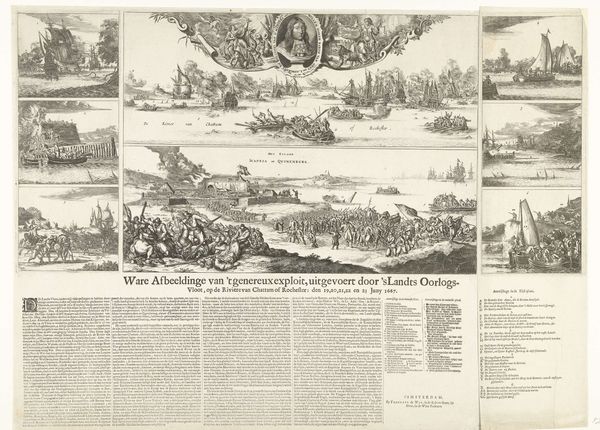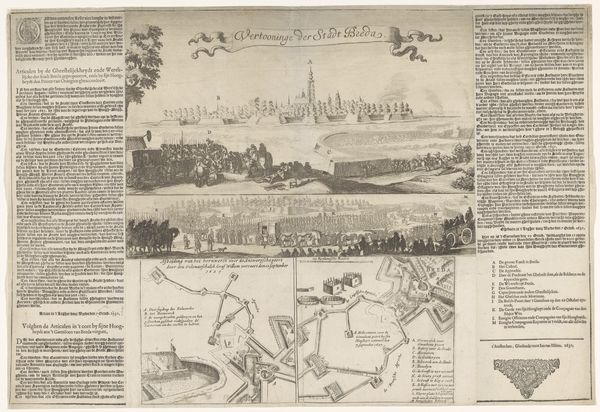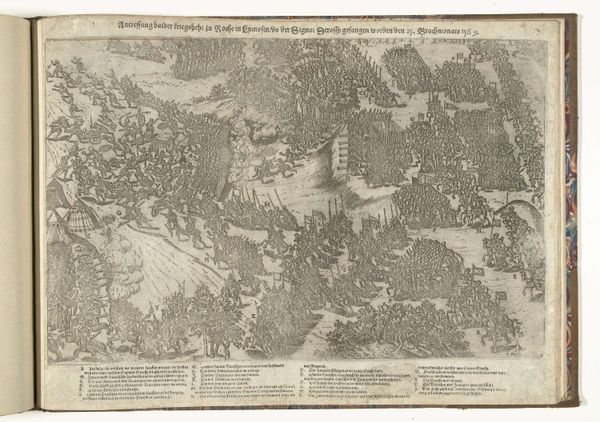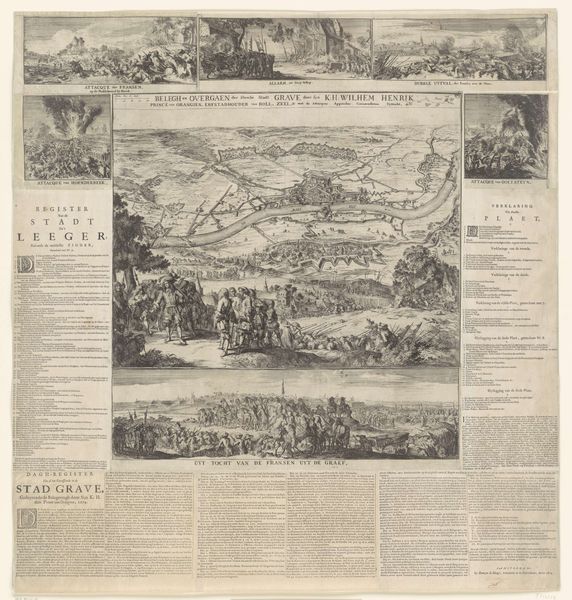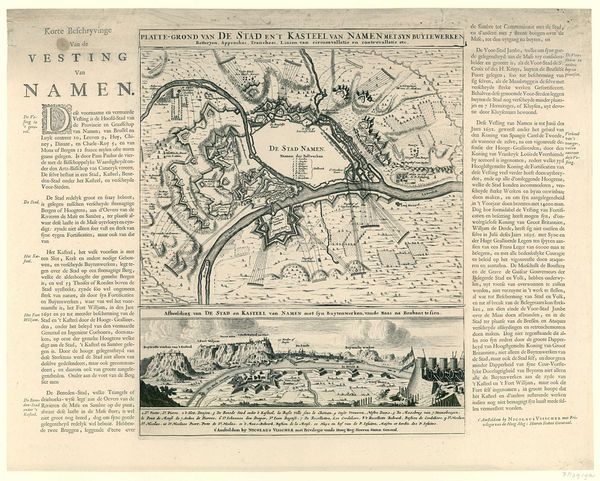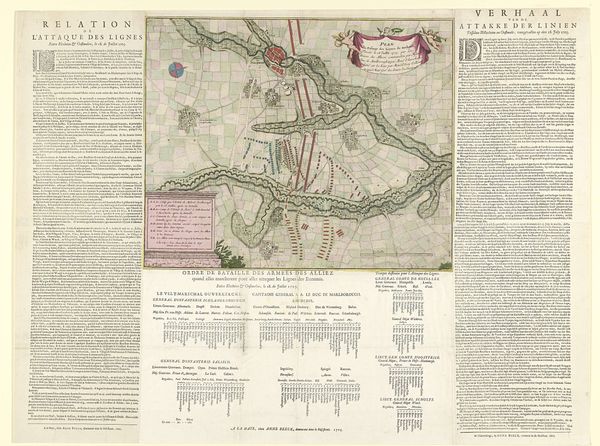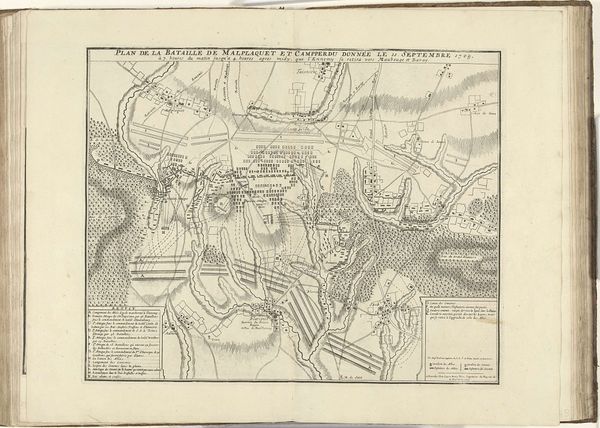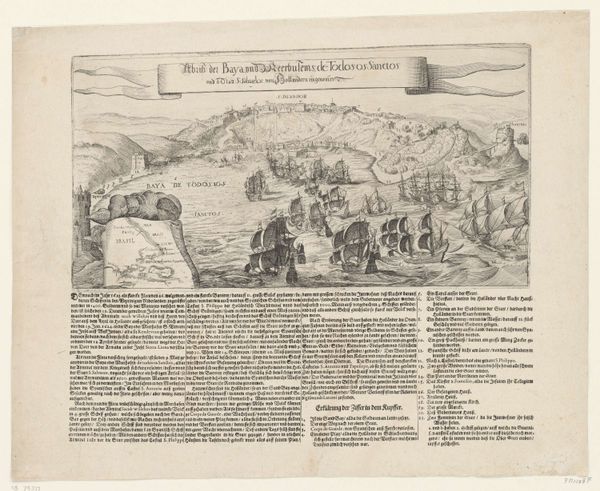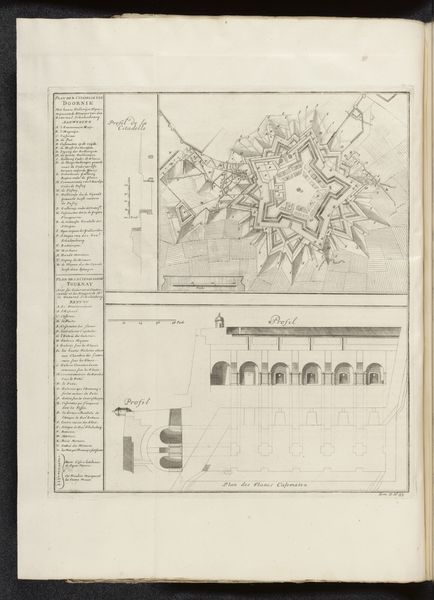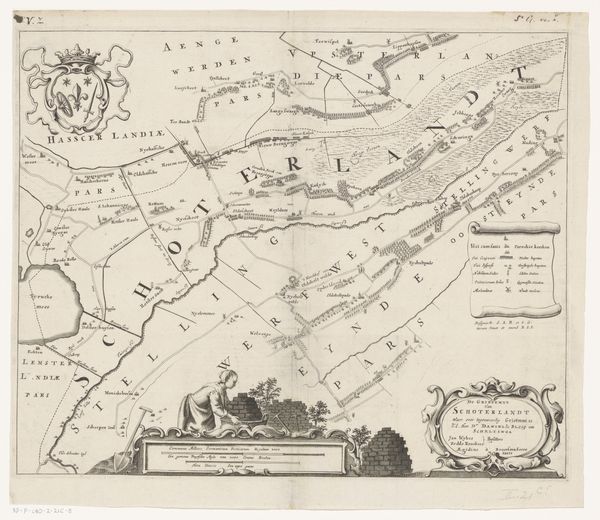
print, engraving
#
baroque
# print
#
landscape
#
genre-painting
#
history-painting
#
engraving
Dimensions: height 767 mm, width 865 mm
Copyright: Rijks Museum: Open Domain
Editor: Here we have Jan van Vianen's engraving, "Slag bij Ramillies, 1706" from 1706, at the Rijksmuseum. It’s incredibly detailed; there's a real sense of organized chaos. What stands out to you in this work? Curator: Formally, I'm drawn to the strategic organization of visual information. Observe the composition—the engraving is compartmentalized, with a bird's-eye map, a depiction of the battle, and textual explanations. Note the interplay of the visual and the textual: how do these elements construct meaning within the overall design? Editor: I see, so it's not just about representing the battle itself? Curator: Precisely. Consider the use of line: notice the clear, precise lines defining the map’s boundaries and the battle scene. The density and variation of these lines create tonal contrasts, suggesting depth and intensity. How does this controlled linearity contribute to the engraving’s aesthetic and its persuasive power as historical documentation? Editor: So the very act of engraving, the lines themselves, add meaning. I hadn't thought of that. Is the intention to make something informative, but also… orderly? Curator: Yes, the emphasis on structure, rather than emotion, reinforces the period's striving for reason. Also, observe the placement of text—French on one side, Dutch on the other, literally framing the imagery. The language reinforces intended viewership for distinct audiences. What impact does this have? Editor: I suppose it positions the viewer within a particular perspective. Okay, I’m beginning to see how the artwork’s impact goes beyond just depicting the battle. Curator: Exactly. It demonstrates how form itself functions as a carrier of meaning. Hopefully, the experience changes your interaction with art, as well.
Comments
No comments
Be the first to comment and join the conversation on the ultimate creative platform.
